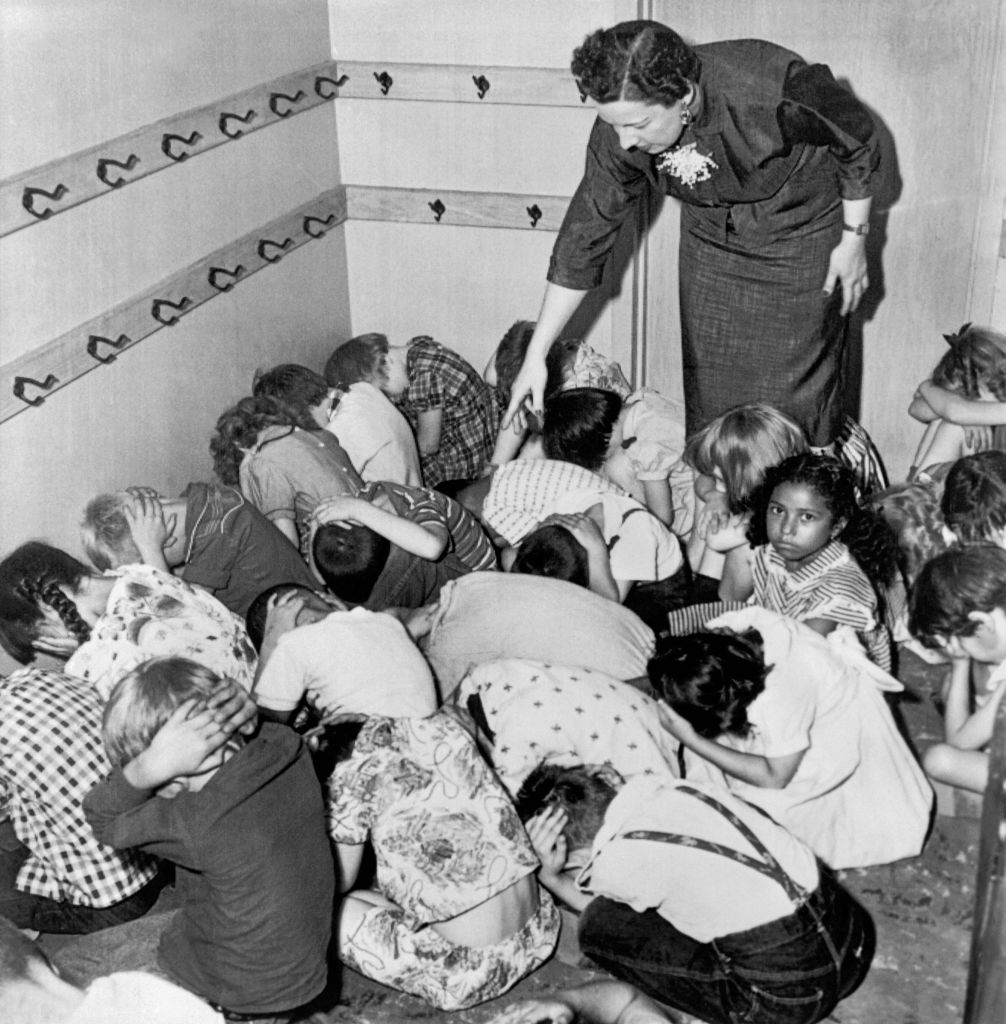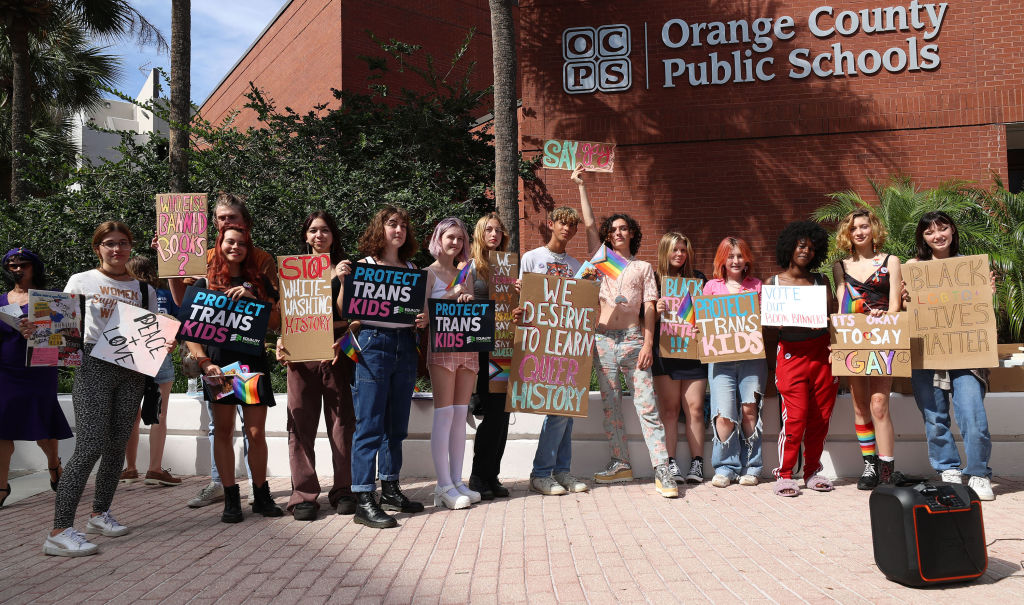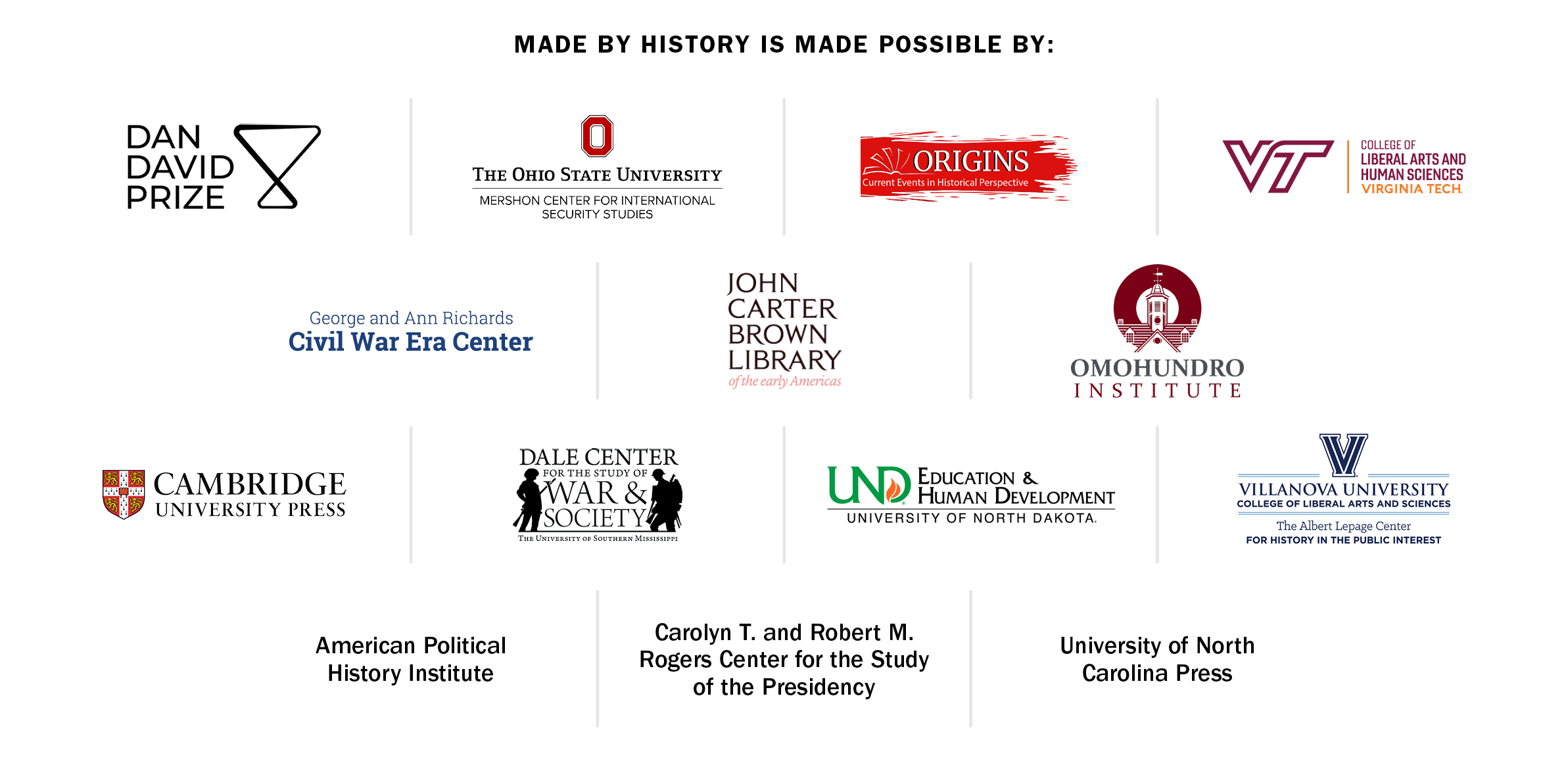
In November, Lori Gimelshteyn, executive director of the Colorado Parent Advocacy Network, warned of “real harm to children across the state” due to school mental health policies. In Oklahoma, Moms for Liberty sounded alarms over Scholastic book fairs, blasting the school-based events for allegedly being “focused on indoctrinating youth with radical viewpoints and sexual ideologies.” Education Next recently printed an essay by Doug Lemov cautioning, “your neighborhood school is a national security risk.” From storybooks to lessons in American history to bathrooms to test scores, politicians and pundits, especially on the right, see public schools as unsafe spaces that will corrupt homes and weaken the nation.
But these schoolhouse panics are neither new nor unique to right-wing figures. From their earliest days in the mid-19th century, public schools have been tasked with creating citizens and safeguarding Americanism. At once celebrated and feared for their power to infiltrate America’s homes and mold children—society’s greatest and most impressionable asset—public schools have been sites of fierce battles. The conflicts over schools became more acute following World War II, when heightened anxieties around national security, crime, and drugs (among others) amplified worries that the nation’s children—white, middle-class children, in particular—were in danger. Since then, the politics of fear have created a high-stakes struggle over American public schools—one in which various parties simultaneously see schools as both the threat to national well-being and sometimes the cure.
In President Franklin D. Roosevelt’s 1941 State of the Union Address, he outlined the “Four Freedoms,” the last of which was “Freedom from Fear.” In 1943, Norman Rockwell depicted this idea with a painting of parents tucking their young children into bed—illustrating how children were central to ideas around fear and safety. By the time the U.S. dropped the atomic bombs in 1945, Americans felt gripped by fear in new and profoundly personal ways.
Read More: New Report Finds That Book Bans Have Reached Their Highest Levels Yet
As the Cold War erupted, schools became a focus of this anxiety because of the stakes. Across the nation, American public school children, clad in dog tags to facilitate the identification of remains in the event of a nuclear attack, participated in “duck and cover” and “sneak attack" drills.
But schools also had the potential to be an asset in this existential struggle. In 1949, President Harry S. Truman declared, “Education is our first line of defense,” envisioning schools as places to inculcate American values, as well as nurturers of the talent needed to win the war.
Yet, for pundits like Allen Zoll, a renowned conservative redbaiter and antisemite, the reliance on schools and teachers was a cause for panic not reassurance. Cautioning that public schools had been infiltrated by communists, he sounded the alarm: “THEY WANT THE CHILDREN OF AMERICA. THEY WANT YOUR CHILD.”
Claims like these were not based in fact but that mattered little when the fears they evoked were so powerful. Such charges sent districts around the country scurrying to ferret out and purge reds from the schools. But, hand-wringing from Zoll and others aside, communists had never infiltrated the nation’s schools. In many cases, these provocateurs were simply cynically utilizing the anxiety around schools and children to mobilize a broader conservative movement that had nothing to do with education at all.
Concerns about espionage and indoctrination weren’t the only worry about the nation’s public schools during these years. In the 1950s, politicians also fretted that the supposedly deficient American education system was disastrously lagging behind the Soviet Union when it came to science instruction. The launch of Sputnik in 1957 only intensified these fears.
In response, Congress passed the National Defense Education Act in 1958 in an attempt to “correct as rapidly as possible the existing imbalances in our educational programs.” The law aimed to protect society by allocating millions of dollars to STEM instruction and other initiatives in public schools.
As the 20th century progressed, the politics of fear tied to schools expanded, becoming more pernicious and abstract. Politicians on both sides of the aisle drove this sense of foreboding as they tried to score points and warn about the dangers posed by the opposition to impressionable children. In the early 1960s, for example, Republican California Superintendent of Education Max Rafferty built a political career on the idea that the collective failure of public schools to teach patriotism was eroding American family values. Meanwhile, Democratic President Lyndon Johnson mobilized support for federal involvement in local public schools by setting up a simple choice: fund schools or fund prisons. Richard Nixon may have summarized the strategy best when he reflected, “people react to fear, not love.”

Beyond intensifying emotion and boosting careers, however, the politics of fear had stark consequences for what children learned. They produced education reforms that were often out of step with the practical realities and the needs of public schools. For instance, the worries about deficient science instruction that drove the National Defense Education Act paved the way for Congress to allocate over $130 billion for science curricula and teaching tools in local schools in the 1950s and 1960s. But a 1977 survey shockingly found that only 30% of school districts—primarily wealthy suburban ones—used any of the federal resources for new materials. Urban schools with high concentrations of low-income students, by contrast, reported supply closets brimming with dusty microscopes and Bunsen burners.
The science funding simply didn’t address the needs of overcrowded, underfunded, and inequitable schools. Legislators should have understood this, because educators in these schools had long pleaded for funding to support infrastructure and expansion of the professional staff. Yet, guided by the politics of fear rather than the realities of the educational system, the federal government delivered science equipment most of the nation’s schools couldn’t use, widening the gap between suburban and urban school systems and the communities they served.
These same dynamics played out again beginning in the 1980s as fears of plummeting SAT scores and faltering international competition intersected with fiscal woes and concerns to produce a new round of hand-wringing about public schools. Conservatives pounced, calling for privatization of education. In 1982, President Ronald Reagan proposed a tax credit initiative that would allow families to use public dollars for private schools, a plan he promised would both help “the inner-city child who faces a world of drugs and crime…and the families who still believe the Lord’s Prayer will do them less harm in the schoolroom than good.”
These same anxieties prompted the 1983 report A Nation at Risk, which warned of “educational disarmament.” Legislators across party lines rushed to fix the system, primarily through the implementation of standardized testing and curricula, as well as charter schools and voucher programs. The bipartisan No Child Left Behind Act, which passed in 2001, epitomized this trend. The reality, however, was that instead of making public education better, the reforms that accompanied the laws stripped schools of play, creativity, critical thinking, and funding—all things educators know enhance learning.

Public schools stand first among the nation’s essential social institutions, with access to every community and family in the nation, even those without children or who choose not to send their kids to public schools. Precisely because of their social significance and their direct impact on homes around the nation, public schools have historically also operated as powerful political tools. Elected officials, candidates, and activists have recognized that they can manufacture anxiety over what is happening in the schools to animate voters and raise funds—whether the fears have any basis in fact or not.
Public education has historically stood as a bastion of American democracy, but the politics of fear have served as a corrosive element. Concerns about kids falling behind or being prey to unsafe ideas have locked the nation’s schools, teachers, and children in a whirl of often ineffective “reform.” And those same politicized fears have transformed public education into not just a topic that divides communities but an engine of polarization that has fractured the nation politically, racially, and geographically. More than any curricular reform or in-school remedy, what the nation’s public schools need most is protection from the politicians and political groups who seize upon them.
Diana D'Amico Pawlewicz is a historian of education policy and the author of Blaming Teachers: Professionalization Policies and the Failure of Reform in American History. She's currently working on her third book project, Panic at the Schoolhouse! How the Politics of Fear Shaped American Public Schools and Polarized the Nation, 1945 to the Present. Made by History takes readers beyond the headlines with articles written and edited by professional historians. Learn more about Made by History at TIME here.
More Must-Reads From TIME
- The 100 Most Influential People of 2024
- Coco Gauff Is Playing for Herself Now
- Scenes From Pro-Palestinian Encampments Across U.S. Universities
- 6 Compliments That Land Every Time
- If You're Dating Right Now , You're Brave: Column
- The AI That Could Heal a Divided Internet
- Fallout Is a Brilliant Model for the Future of Video Game Adaptations
- Want Weekly Recs on What to Watch, Read, and More? Sign Up for Worth Your Time
Write to Diana D'Amico Pawlewicz / Made by History at madebyhistory@time.com
